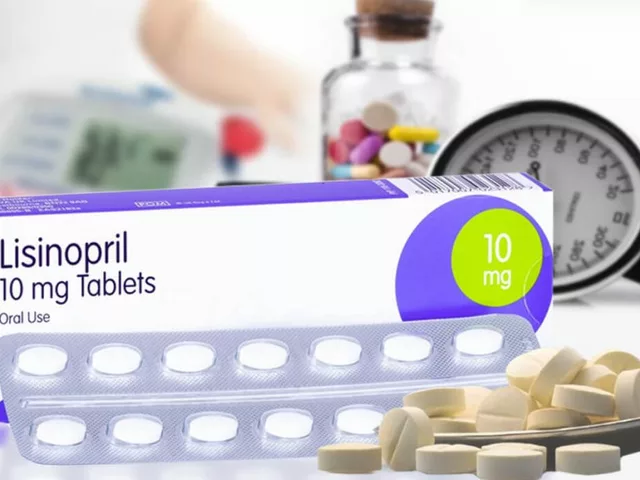Beta-Blocker Comparison Tool
Inderal (Propranolol)
Receptor Selectivity: Non-selective β1/β2
Typical Dose: 40-320 mg/day
Half-Life: 3-6 hours
Primary Uses: Hypertension, angina, arrhythmia, migraine, anxiety
Notable Side Effects:
- Bronchospasm (risk for asthma patients)
- Fatigue
- Cold hands/feet
- Potential masking of hypoglycemia
Metoprolol
Receptor Selectivity: β1-selective
Typical Dose: 10-200 mg/day
Half-Life: 3-7 hours
Primary Uses: Hypertension, angina, heart-failure, post-MI
Notable Side Effects:
- Bradycardia
- Mild bronchoconstriction
- Insomnia
- Depression
Atenolol
Receptor Selectivity: β1-selective
Typical Dose: 25-100 mg/day
Half-Life: 6-9 hours
Primary Uses: Hypertension, angina, arrhythmia
Notable Side Effects:
- Sleep disturbances
- Reduced exercise tolerance
- Occasional sexual dysfunction
Carvedilol
Receptor Selectivity: β + α1-blocker
Typical Dose: 3.125-25 mg BID
Half-Life: 7-10 hours
Primary Uses: Heart-failure (NYHA II-IV), hypertension
Notable Side Effects:
- Dizziness on standing
- Weight gain
- More pronounced fatigue due to α-blockade
Labetalol
Receptor Selectivity: β + α1-blocker
Typical Dose: 100-400 mg BID (oral)
Half-Life: 5-8 hours
Primary Uses: Hypertensive emergencies, pregnancy-related HTN
Notable Side Effects:
- Transient hypotension
- Headache
- Nausea when given IV
Key Considerations:
- Asthma/COPD: Avoid non-selective blockers like Inderal; choose β1-selective agents.
- Heart Failure: Carvedilol offers benefits beyond β-blockade.
- Pregnancy: Labetalol is preferred for pregnancy-induced hypertension.
- Migraine Prevention: Propranolol is well-established, but consider alternatives if side effects occur.
Select Your Condition:
When your doctor suggests a beta‑blocker, the brand name can feel like a maze. Inderal (Propranolol) is a non‑selective beta‑adrenergic blocker that’s been on the market for decades, used for high blood pressure, angina, arrhythmias, migraine prevention, and even performance anxiety. But you’re not limited to one pill. Several newer agents claim better tolerance, fewer side effects, or a focus on specific heart conditions. This guide breaks down Inderal side‑by‑side with the most prescribed alternatives so you can see which fits your health goals.
Quick Takeaways
- Inderal works on both β1 and β2 receptors, making it versatile but also prone to bronchospasm in asthma patients.
- Metoprolol and atenolol are β1‑selective, offering a safer profile for people with lung issues.
- Carvedilol adds α‑blockade, which can lower blood pressure more effectively in heart‑failure cases.
- Labetalol provides combined α/β blockade useful for hypertensive emergencies.
- Choosing the right drug depends on your primary condition, other medicines, and how you react to side effects.
What Is Inderal (Propranolol) Exactly?
Propranolol belongs to the first generation of beta‑blockers. Because it blocks both β1 receptors (heart) and β2 receptors (lungs, blood vessels), it lowers heart rate, reduces cardiac output, and dampens the sympathetic nervous system’s “fight‑or‑flight” signals. Typical oral doses range from 40mg to 320mg per day, split into 2‑3 doses. The drug’s half‑life is about 3‑6hours, so most patients stay on a twice‑daily schedule.
Key FDA‑approved uses include:
- Essential hypertension
- Angina pectoris
- Supraventricular tachycardia
- Prevention of migraine headaches
- Stage fright and performance anxiety
Because it isn’t selective, propranolol can aggravate asthma, cause cold extremities, and trigger low blood sugar in diabetics. Those downsides drive many patients to explore newer alternatives.
Top Alternatives and How They Differ
Below are the four most common beta‑blockers that doctors prescribe as substitutes for Inderal. Each entry starts with a micro‑tagged definition so search engines can clearly map the entities.
Metoprolol is a β1‑selective blocker approved for hypertension, chronic angina, and heart‑failure management. It comes in immediate‑release (10‑100mg) and extended‑release (25‑200mg) forms, with a half‑life of 3‑7hours.
Atenolol is another β1‑selective agent that’s often chosen for patients who experience tremors or insomnia on non‑selective blockers. Typical doses run 25‑100mg once daily, and the drug’s half‑life stretches to about 6‑9hours.
Carvedilol blends β‑blockade with α1‑adrenergic antagonism. This dual action reduces afterload as well as heart rate, making it a staple in systolic heart‑failure treatment. Doses start at 3.125mg BID and can reach 25mg BID; half‑life averages 7‑10hours.
Labetalol offers combined α/β‑blockade, useful for urgent hypertension spikes. Intravenous dosing begins at 20mg over 2minutes, followed by 40‑80mg infusions; oral tablets range from 100‑400mg BID. Its half‑life is roughly 5‑8hours.
Side‑Effect Profiles at a Glance
Side effects often dictate which drug you’ll tolerate best. Here’s a quick snapshot:
- Inderal: bronchospasm, fatigue, dizziness, cold hands/feet, potential mask of hypoglycemia.
- Metoprolol: bradycardia, mild bronchoconstriction (less than propranolol), insomnia, depression.
- Atenolol: sleep disturbances, reduced exercise tolerance, occasional sexual dysfunction.
- Carvedilol: dizziness on standing, weight gain, more pronounced fatigue due to α‑blockade.
- Labetalol: transient hypotension, headache, nausea when given IV.
Patients with asthma or chronic obstructive pulmonary disease (COPD) usually steer clear of non‑selective drugs like Inderal and favor the β1‑selective options.

Comparative Table of Core Attributes
| Drug | Receptor Selectivity | Typical Dose Range | Half‑Life (hrs) | Primary FDA Indications | Notable Side‑Effects |
|---|---|---|---|---|---|
| Inderal (Propranolol) | Non‑selective β1/β2 | 40-320mg/day | 3-6 | Hypertension, angina, arrhythmia, migraine, anxiety | Bronchospasm, fatigue, cold extremities |
| Metoprolol | β1‑selective | 10-200mg/day | 3-7 | Hypertension, angina, heart‑failure, post‑MI | Bradycardia, mild bronchoconstriction, insomnia |
| Atenolol | β1‑selective | 25-100mg/day | 6-9 | Hypertension, angina, arrhythmia | Sleep issues, reduced exercise tolerance |
| Carvedilol | β + α1‑blocker | 3.125-25mg BID | 7-10 | Heart‑failure (NYHA II‑IV), hypertension | Dizziness, weight gain, fatigue |
| Labetalol | β + α1‑blocker | 100-400mg BID (oral) | 5-8 | Hypertensive emergencies, pregnancy‑related HTN | Transient hypotension, headache |
How to Pick the Right Beta‑Blocker for Your Situation
Think of the decision like fitting a shoe: the right size (dose) matters, but the shape (selectivity) and material (side‑effect profile) are just as crucial.
- Assess your primary condition. If you’re mainly treating high blood pressure without lung disease, any of the listed drugs can work. For heart‑failure patients, carvedilol’s extra α1‑blockade often gives a mortality benefit.
- Check for respiratory comorbidities. Asthma or COPD steers you toward β1‑selective agents (metoprolol, atenolol) or even non‑beta alternatives.
- Look at other meds. Drugs that lower heart rate (e.g., digoxin) can combine poorly with non‑selective blockers, increasing the risk of bradycardia.
- Consider side‑effect tolerance. If cold hands bother you, a β1‑selective option may feel warmer. If you experience frequent migraines, propranolol’s proven efficacy could outweigh its drawbacks.
- Discuss pregnancy. Labetalol is the go‑to beta‑blocker in pregnancy‑induced hypertension because it’s safer for the fetus than many non‑selective agents.
Always involve your prescriber when switching. A typical taper for propranolol might be 25mg every three days to avoid rebound hypertension.
Real‑World Stories: When Patients Switched
Case 1 - Asthma + Hypertension: 58‑year‑old Michael was on Inderal for years when he developed moderate asthma. His doctor switched him to metoprolol 50mg twice daily. Within two weeks his breathing improved, and his blood pressure stayed in the 120s/70s range.
Case 2 - Heart‑Failure Survival Boost: 71‑year‑old Linda had NYHA class III heart failure. Her cardiologist introduced carvedilol, titrating up from 3.125mg BID to 12.5mg BID over six weeks. Her ejection fraction rose from 30% to 38% and she reported fewer hospitalizations.
Case 3 - Migraine Relief: 27‑year‑old Sara struggled with monthly migraines. She tried atenolol 50mg daily after reading about its migraine‑preventive properties. After a month, her migraine days dropped from 8 to 2, and she liked the once‑daily dosing.
Potential Pitfalls and How to Avoid Them
- Sudden discontinuation. Stopping propranolol abruptly can cause a rebound surge in heart rate and blood pressure. Taper slowly under medical supervision.
- Drug interactions. Combine beta‑blockers with calcium‑channel blockers (especially verapamil) only after dose adjustments; the duo can cause severe bradycardia.
- Masking hypoglycemia. In diabetics, beta‑blockers may hide the typical rapid heartbeat sign of low sugar. Monitor glucose closely.
- Pregnancy considerations. While labetalol is generally safe, propranolol crosses the placenta and can slow fetal growth.
Bottom Line: Tailor the Therapy to You
Inderal remains a versatile workhorse, especially if you need a drug that covers both heart rhythm and migraine prevention. However, if asthma, chronic fatigue, or a specific heart‑failure stage is part of your health picture, one of the newer, more selective or dual‑acting alternatives may give you better results with fewer unwanted effects. The best choice always comes from a conversation with your clinician, weighing your main condition, co‑existing illnesses, and how your body reacts.

Frequently Asked Questions
Can I switch from Inderal to a β1‑selective blocker without a doctor?
Never. Switching any prescription beta‑blocker requires a taper plan and monitoring for rebound hypertension or arrhythmia. Your doctor will set a schedule that safely lowers the dose while introducing the new medication.
Is propranolol still the best option for migraine prevention?
Propranolol is one of the most studied migraine preventives and works well for many people. However, newer agents like topiramate or CGRP monoclonal antibodies may be preferred if you can’t tolerate beta‑blockers.
Which beta‑blocker is safest during pregnancy?
Labetalol is most commonly recommended for pregnancy‑induced hypertension because it has a favorable safety profile for both mother and fetus. Propranolol is used less often due to concerns about fetal growth.
Do beta‑blockers affect exercise performance?
Yes. By lowering heart rate and cardiac output, they can reduce maximal aerobic capacity. Athletes often time their doses to avoid peak workout periods.
What should I do if I experience shortness of breath on Inderal?
Shortness of breath can signal bronchospasm, especially in people with asthma. Contact your healthcare provider immediately; they may switch you to a β1‑selective blocker or adjust the dose.









